Results
DKT is Results-Oriented
Sales results help us measure our organization’s impact and assess the effectiveness of our programming. DKT prioritizes the provision of high-quality products and services at an affordable cost to consumers.
DKT is the largest provider of reproductive healthcare and safe abortion globally. DKT has set a goal to further our mission and reach 90 million couple years of protection (CYPs) by 2030. DKT is committed to ensuring our products are affordable too; in 2022, DKT’s cost per CYP dipped below $1, where it has stayed since. Our results demonstrate the scale of DKT’s global product offerings, showing an overall trajectory of growth.

DKT’s 2024 Impact
Annual Results
2019
2018
2017
2016
2015
Promoting Data Visibility
For 32 years (1991-2022), DKT collected self-reported sales data from contraceptive social marketing programs around the world and published the Contraceptive Social Marketing Statistics (CSM) Report. The CSM Report provided the global health community with a clear picture on the impact of social marketing programs on expanding access to contraception. DKT is committed to making our programmatic data widely available to promote transparency.
Download CSM Reports to more deeply understand the scale and impact of social marketing organizations (including DKT) over time below.
For present and future CSM Reports, refer to the Reproductive Health Supplies Coalition (RHSC), which now produces this report.
Data Drives Informed Decision-Making
Learn how DKT measures success and supports transparency
Sales
Sales results help DKT measure our organization’s impact and assess the effectiveness of our programs. Because social marketing allows individuals to obtain products in a relatively anonymous way, DKT primarily depends on data captured through the exchange of goods from our sales teams to providers. Product use is inferred from each sale; providers and retailers would not continue to procure our products if they were not in demand.
Each month, DKT consolidates sales data from around the world, disaggregating results by country and product. Reviewing monthly sales results helps us determine which products are performing well and which are not, providing opportunities to adjust marketing, supply chain management, and capacity building strategies accordingly.
Because DKT’s products are provided at a low cost rather than being given away for free, sales results are also tied to financial reporting and can be easily monitored. Every year, DKT aims to deliver more impact and become more sustainable than the year before. Global sales of our products were strong enough to recover over 80% of operating expenses in 2023.
DKT publishes our sales results annually to promote the transparent exchange of information.
Procurement
DKT sells billions of products every year. The vast majority of the products we sell are procured with our own resources. DKT uses audited financial statements to track annual product procurement values. DKT invests over $120 million each year to procure contraception, safe abortion, and HIV prevention products, making us one of the largest providers of reproductive health care in the world.
Couple Years of Protection (CYPs)
DKT uses our sales results to calculate couple years of protection (CYPs), a well-established and commonly accepted metric that represents the amount of contraception one couple needs to prevent pregnancy over a one-year period.
CYPs are an important metric used by donors, demographers, and public health practitioners to evaluate the success of contraceptive social marketing programs. CYPs are calculated using product sales and service delivery data. CYPs are unique to each contraceptive method and are calculated based on the method’s duration of use and effectiveness. DKT heavily discounts the impact of sales to governments and non-governmental organizations, to account for the fact that these CYPs are delivered and counted in public health sector data and reporting. This makes DKT’s estimates more conservative.
CYP Conversion Factors
There are different methods of calculating CYPs. DKT uses the following system, which accounts for effectiveness, duration, wastage, and loss.
For short-term methods that require multiple units or doses each year to be effective (e.g. condoms, oral contraception, injectables, etc.), we divide the number of units of each method provided by the respective converter to estimate CYPs.
For long-acting reversible contraceptives such as implants and IUDs, DKT assigns CYP value based on the expected amount of time a woman will use that contraceptive before replacing it. Therefore, we multiply the number of units of each long-acting method provided by the respective converter to estimate CYPs.
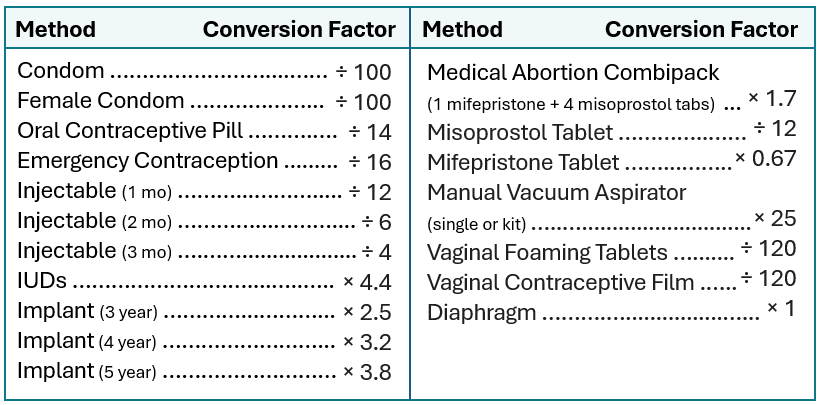
Costs and Results Analysis
DKT uses CYPs to gauge the cost-effectiveness of our programming. Our annual Costs and Results analysis estimates the donor cost of providing reproductive health products and services. We calculate the Donor Cost per CYP by dividing total donor funds received by a DKT program by the number of CYPs generated in that country in a given year. The Donor Cost per CYP metric does not include the value of the sales revenue generated by the operation itself.
In 2022, DKT’s cost per CYP fell below $1 for the first time.
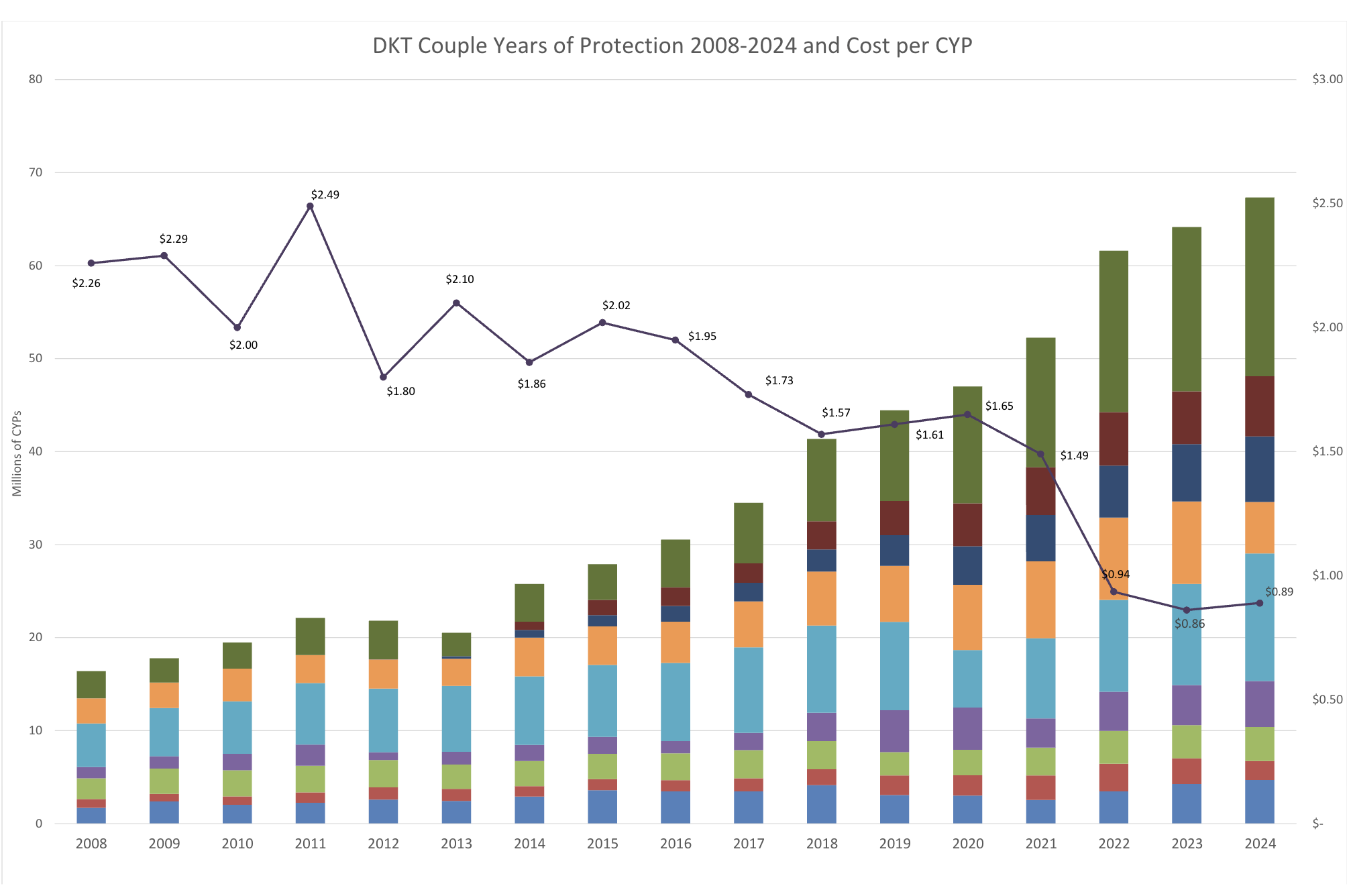
Health Impact
Research shows that making contraception and safe abortion more available, affordable, and accessible saves lives. DKT’s work prevents millions of unintended pregnancies, unsafe abortions, and maternal deaths each year through the provision of our comprehensive product portfolio.
DKT translates the provision of reproductive health products and services into health impact to inform our health promotion strategies and evaluation frameworks. DKT conducts quantitative analyses using the MSI Reproductive Choices Impact 2 calculator to estimate health outcomes based on country-specific demographic information and product sales and services. Each product sold or service rendered corresponds to a health impact. For example, when DKT sells a manual vacuum aspirator in a country where health care providers have been rigorously trained on how to safely use, sterilize, and store the product, it can be reused 25 times; DKT attributes 25 safe abortion care services to the sale of one aspirator, which averts maternal deaths, maternal disability-adjusted life years (DALYs), and unsafe abortions. You can learn more about the methodology from MSI Reproductive Choices here.
Key Health Impact Indicators
- Unintended pregnancy: A pregnancy that is reported to have been either unwanted or mistimed (Guttmacher Institute, 2003).
- Maternal death: The death of a woman while pregnant or within 42 days of termination of pregnancy, irrespective of the duration and site of the pregnancy, from any cause related to or aggravated by the pregnancy or its management but not from accidental or incidental causes. (World Health Organization, 1992).
- Child death: Death of a child under the age of five (World Health Organization). This health indicator is evaluated by DKT because child deaths can be reduced by increasing birth spacing or the previous birth interval (PBI). This indicator does not capture the demographic impact of increased contraceptive prevalence (i.e. fewer children are born), but rather the changes to the health profile of the individuals giving birth through spacing and timing (MSI Reproductive Choices).
- Unsafe abortion: A procedure for terminating an unwanted pregnancy either by persons lacking the necessary skills or in an environment lacking the minimal medical standards or both (Division of Family Health and Special Programme of Research and Research Training in Human Reproduction, 1995). Note: the definition of what is considered safe is subjective and varies based on the treatment (medical or surgical) and pregnancy duration.
- Maternal disability-adjusted life year (DALY): The loss of the equivalent of one year of full health due to premature mortality (YLLs) and the years lived with a disability (YLDs) due to health complications (World Health Organization), in this case adverse events associated with a maternal health condition.
DKT's Contribution to Increasing Modern Contraceptive Prevalence
DKT’s social marketing programs have increased access to modern contraceptive prevalence by registering new products, launching behavior change campaigns, and reducing barriers to reproductive healthcare. DKT partnered with Dr. Ian Salas and the William H. Gates Institute for Population and Reproductive Health at Johns Hopkins University to analyze our impact in key markets.
The methodological approach builds on prior research estimating the total number of contraceptive users in FP2030 countries, calculated independently by the Track20 Team at Avenir Health. Our analysis uses DKT product sales and consumption data to estimate our contribution to total contraceptive users. The analysis incorporates standard CYP adjustment factors for short-acting methods and CYP-consistent continuation rates for long-acting reversible contraceptives.
Read Part 1 and Part 2 in Insights & News.
DKT's Contribution to Reducing the Maternal Mortality Ratio
DKT uses health impact data to estimate our contribution to reducing the maternal mortality ratio (MMR) in the countries in which we operate. Using the latest available MMR data (or calculating a trendline to estimate a more appropriate comparison), we divide the number of maternal deaths averted by DKT in a country by the estimated number of maternal deaths in that country. DKT estimates that our provision of products and services contributes to an estimated 10% reduction in maternal deaths.
Providers Trained & Detailed
DKT collects data on the total estimated number of health care providers who received training or medical detailing from DKT each year. This includes doctors, midwives, and nurses who received formal training—both in-person or virtual—as well as pharmacists, pharmacy assistants, chemists, and other lower-cadre providers who were detailed by a DKT medical representative or salesperson. Medical detailing typically takes place during a sales call or restocking visit from a DKT representative, but it is more than just a simple visit. DKT representatives impart knowledge or capacity building to the provider to enhance their ability to provide higher-quality services.
Training topics are country-specific and depend on the type of provider, but formal training typically includes theoretical components (e.g. the mechanism of action and side effects of products) and practical, hands-on components (e.g. practice IUD insertion and removal). Detailing encompasses topics such as helping clients manage side effects, counseling, and business-related skills such as inventory management.
DKT monitors training statistics to evaluate our contribution to improving the capacity of providers in a given country. These figures are also used to make business decisions, including allocating CYPs to the sale of manual vacuum aspiration (MVA) technology, which can be reused multiple times depending on how the equipment is handled, cleaned, and stored—all of which are influenced by the rigor and breadth of training provided.
Product Procurement
Each year, DKT spends millions on commodity procurement to strengthen supply chains. In recent years, DKT has invested over $120 million per year to procure commodities, making us one of the largest procurers of reproductive health products. DKT’s procurement data does not include management fees or shipping, reflecting the actual cost of goods purchased. DKT’s total procurement values are audited and published in our annual financial statements.
In addition to tracking our own procurement results, DKT also monitors the total value of procurement from organizations operating at a similar scale, including UNFPA and USAID. Both institutions historically publicized their results in annual reports.
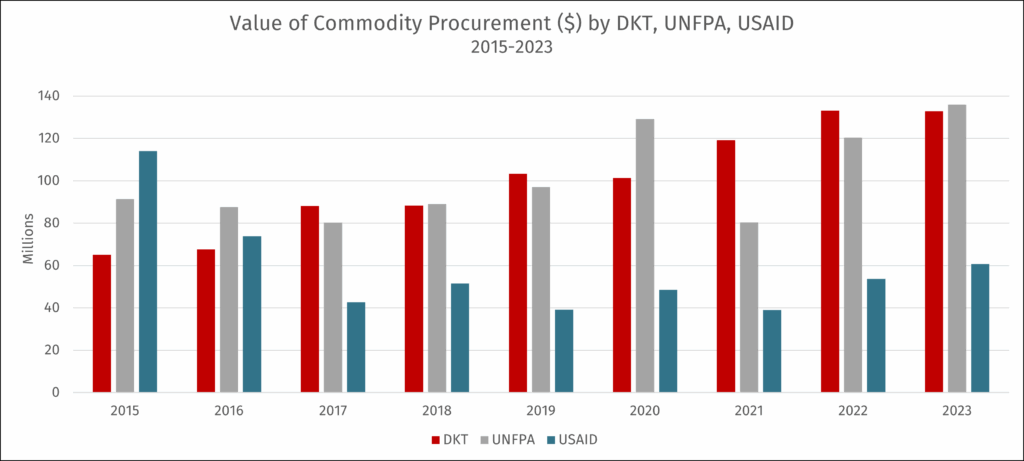




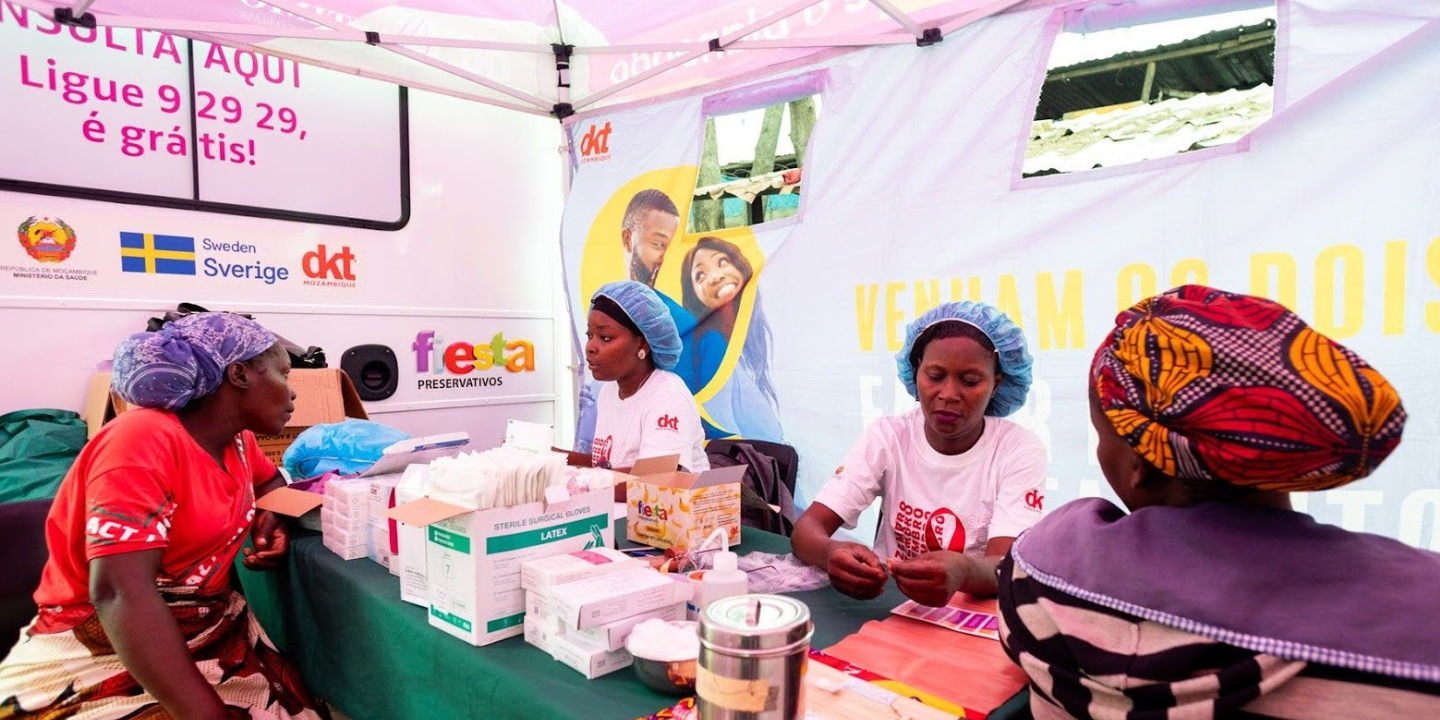
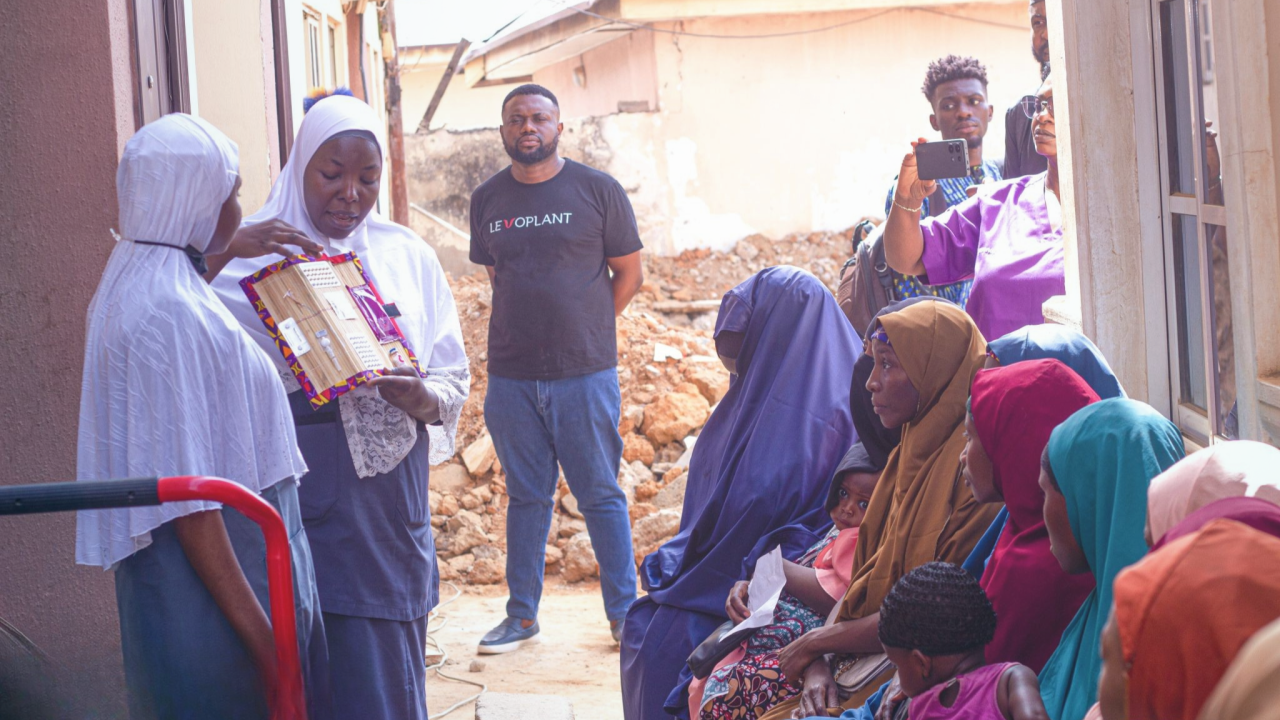
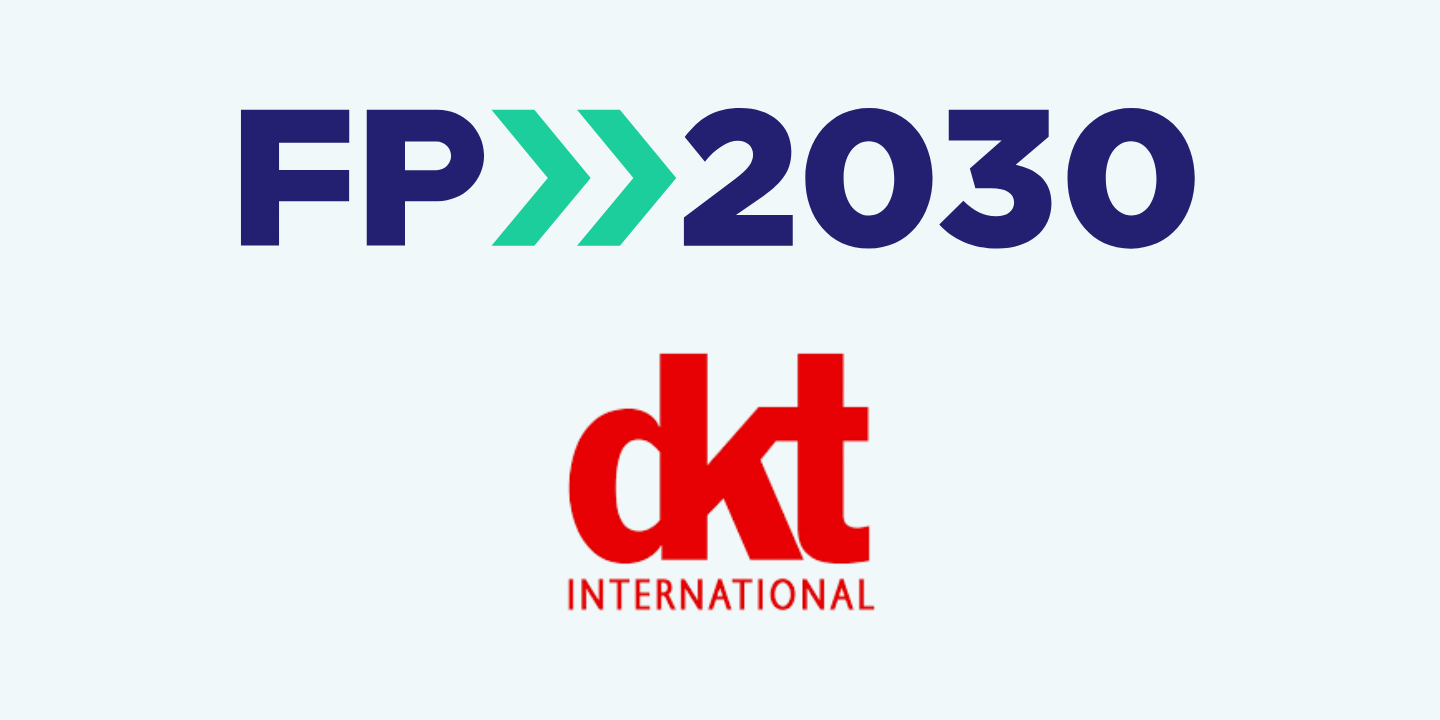
DKT International Announces 2025 Phil Harvey Innovation Award Winners